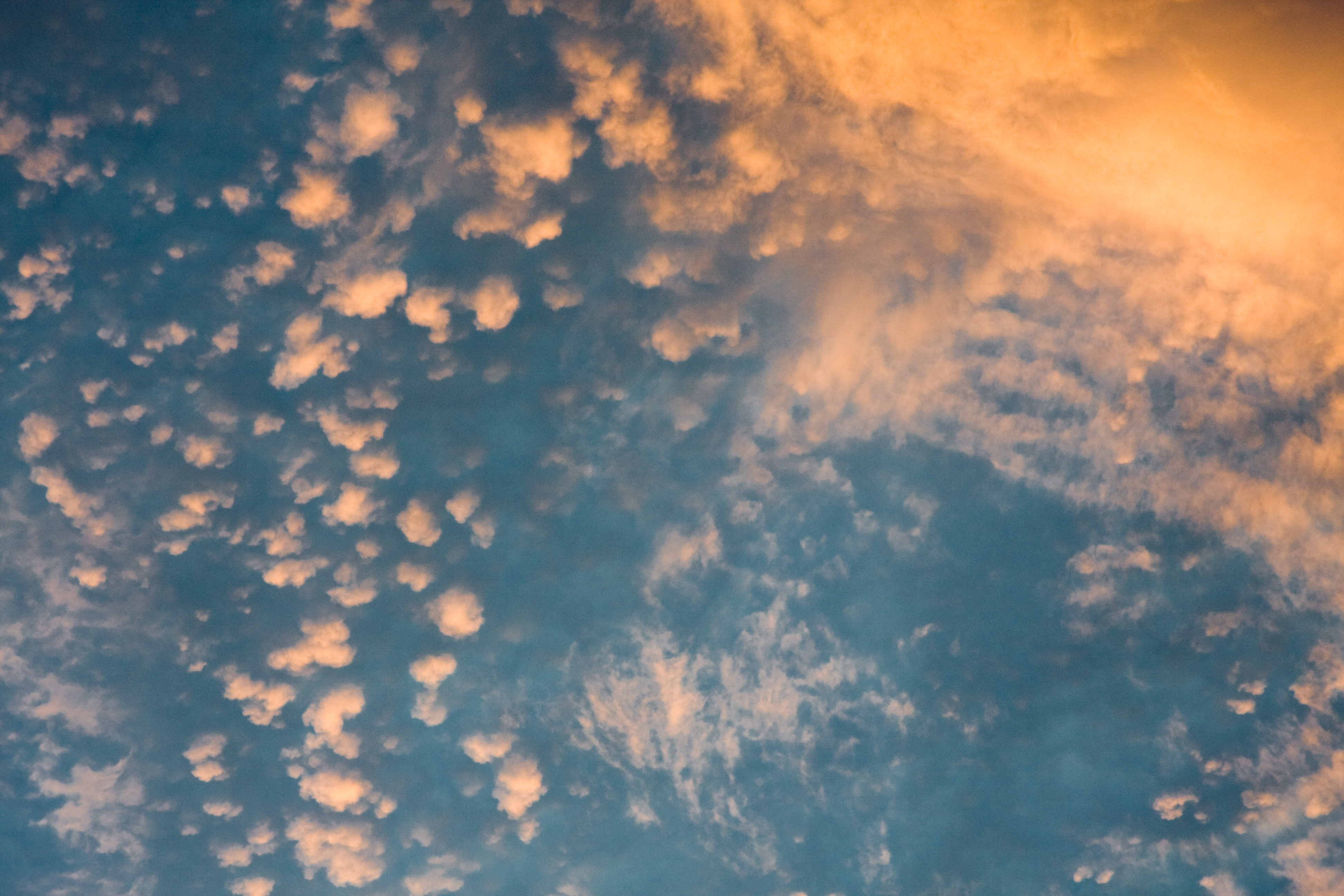
Yesterday afternoon, all at once, my son and I started to feel a little sluggish. For me, a little afternoon slump isn’t so surprising. But for a kid who’s usually climbing up doorjambs, ripping off pull-ups, or teaching himself how to do a corkscrew flip on the trampoline, it’s weird. But there we were in the climbing gym (see above) and he jumped off the wall and stumbled over to me looking a little shocked. “I’m tired,” he said.
It wasn’t until we got outside and looked up at the clouds that we figured out what might have happened. All day, there had been beautiful formations that looked like fish scales and now, the clouds had reformed into the rounded bumps that one of my kids’ teachers had called “rain blossoms.” (They’re more technically called mammatus clouds.) I checked the weather: the next day, there was a 20 percent chance of thunderstorms.
Rapid changes in atmospheric pressure, whether climbing to mountain peaks or diving into the deep, are known to affect the body. There are names for the sorts of discomfort—altitude sickness, the bends–which can sometimes be severe, even fatal. But even at sea level, the falling barometric pressure before a storm may bring on other changes in internal weather.
Some research suggests a link between falling pressure and headaches, particularly for those who suffer from migraines—which can also be linked to fatigue. Another survey of those in chronic pain found that the more than 550 people surveyed felt that the weather affected their symptoms.
But some of these effects are like the weather ahead: unsettled. A 2007 study pointed to changes in pressure and temperature affecting knee pain for those with osteoarthritis. But another study this year did not find a link between weather and musculoskeletal pain, although it did find a connection between changing weather and gout.
And researchers aren’t sure what the possible mechanism is for the changes we might feel. It may be that the drop in air pressure could mean that muscles and tendons can expand, creating internal pressure on the joints. Others say that the weather could change our activity level, which could play more of a role in stiffness and pain.
Uncertainty in health research is both fascinating and tricky. I love learning about anything that can help us understand more about our bodies and how they interact with the world. And also at some point, you’re in the body you’re in, having the experience you’re having.
Yesterday, we went home, curled up in bed and waited for the storm to come. And tonight, the setting sun is turning the high clouds pink, and my son is swinging from the pull-up bar again.
*
Image by Calyponte/Wikimedia Commons, Creative Commons license
I am one who is GREATLY affected by barometric changes, so I can relate to your son. I lived in the Eastern Sierra of California for 20 years as an avid rock climber. Two years ago I moved to the coast of Northern California where fog, humidity, swirling clouds, and drastically changing barometric pressure are a continuous way of life. I get terribly depressed—with headaches—each time the pressure drops and fogginess wraps our home area. It can be tied to issues in the brainstem and neck; I have a constricted vagus/jugular through my neck that restricts blood flow out of the brain, creating back pressure. This IS a real phenomenon that happens to many people. Best of luck to you and your son! There are supplements that may help; also red lights (happy lights) have been shown to help with mood swings in your his seasonal disorder.